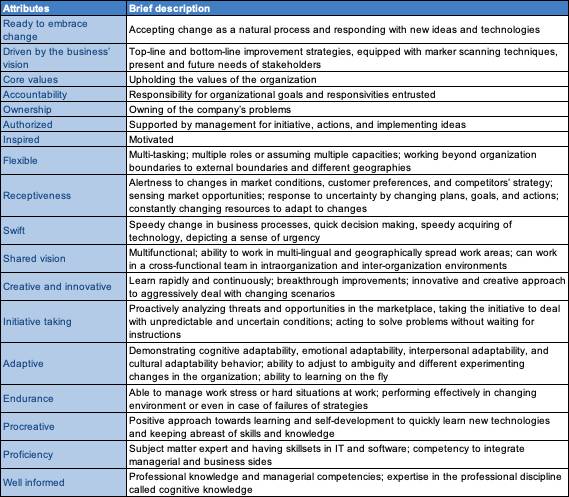How to Establish Proactive Internal Communication Practices for Organizational Strategic Alignment

Image Source: Canva
One of the greatest human inventions is the magnetic compass, a device that uses the magnetic fields produced by the Earth’s poles for direction. This invention made navigation around the world easier than ever and it has evolved and been integrated into more complex and advanced systems to provide more accurate navigation.
Analogously, organizational strategy is the compass used by organizations to navigate the journey to their strategic objectives, long-term goals, and vision. If the strategy is not well communicated and understood by all employees, navigation toward the vision is difficult. To achieve strategic alignment, transformation, and growth, the strategy must be conceived and acknowledged by all employees. Therefore, the Strategy Management Office (SMO) should emphasize the importance of internal strategy communication and education while developing and executing the strategy to ensure overall organizational strategic alignment.
Read More >> Internal Communication Strategy: Guiding Principles and Methods
First, the success of a strategic alignment is underlain by how far employees at the departmental level—the gears and the beating heart of the organization—understand and support the strategy. According to Robert S. Kaplan and David P. Norton in their book “The Execution Premium: Linking Strategy to Operations for Competitive Advantage,” the organization’s strategy can be visually and quantitatively explained using global strategy maps and scorecards. This can be cascaded to each unit in the organization by applying the top-down approach, ensuring strategic alignment. The benefit of this process is to give each department the opportunity to derive their own strategy maps and scorecards to develop their skills and knowledge that fit the corporate strategy.
For this process to be implemented professionally, each department should produce a “service-level agreement” that shows how their department’s strategic goals support the strategy along with measurable metrics to be checked periodically by the SMO. Employees play an important role in implementing the strategy at a personal level. This triggers the need for a well-designed communication plan that consistently provides guidance and support to ensure that the strategic goals are always remembered and acknowledged by each employee, how the organization is achieving said goals, and who needs support to do so. The SMO should provide this communication plan to each department and provide training on how to use its channels.
Second, understanding the distinction in management levels as well as how to deliver the strategy to the targeted audiences and guide them in following it ensures professional implementation of strategic alignment. As discussed in The KPI Institute’s Certified Performance Management Professional course, there are three levels of management. The highest level is Top-Level Management, which uses a strategic management style that involves adopting long-term views and ensuring that tasks are performed in such a way as to achieve strategic goals. C-suite executives such as the chief executive officer (CEO), chief financial officer (CFO), chief operating officer (COO), and chief information officer (CIO) are examples from this level who need to digest long-term goals to better deliver them to the other management levels. Hence, the SMO should support each chief officer to have a clear understanding and implementation of long-term goals.
Middle-Level Management is the next level, and it includes general, regional, and divisional managers who deliver results by planning and setting objectives for their respective divisions. SMO should facilitate training sessions in performance measurement and management for this management level in order to ensure strategic goals are well measured, managed, and aligned with the mission.
The last level of management is called Operational-Level Management, and it consists of first-line managers, department managers, and team leaders. These managers aim to develop a high-performance culture and high-performance work systems. Additionally, they manage teams and individual performance to meet organizational goals. Thus, the SMO should identify the core process that represents the organization’s strategic goal and that gives value propositions to its identity and then, work together with the operational managers to build the culture and the system of the organization based on this process.
Read More >> How public entities can better communicate strategy to citizens
Finally, clear corporate values enforce strategy implementation and guide employees’ behavioral aspects, priorities, and attitudes toward achieving organizational goals and aligning them with the corporate strategy. Corporate Values enforce principles that employees use to make decisions in day-to-day business activities, and they also solidify organizational culture. According to a survey carried out by employee engagement specialists Reward Gateway, employers with high Employee Net Promoter Scores (eNPS) have a workforce where over 80% of employees feel that they are recognized by their employer when they demonstrate corporate values. Therefore, a values-driven organization creates a work environment that fosters organizational strategic alignment.
To succeed at achieving strategic alignment, employees at the departmental level should understand and support the corporate strategy. Moreover, understanding how to deliver and support corporate strategy according to management levels, helps in professional strategy implementation. Finally, creating a values-driven workforce encourages employees to drive their behaviors and attitudes toward achieving organizational strategic goals.
If you are interested in reading more insightful articles about strategy and communication, click here.
**********
This article is written by Engr. Hussien Abdullah Alkhalifah, a strategy and business planning professional who specializes in corporate performance, agile project management, business process improvement, performance management, KPI implementation, quality control, and strategic planning, among others. Connect with him on LinkedIn.
Editor’s Note: This article was first published on May 14, 2024 and was last updated on September 16, 2024.
 Across the globe, many governments and corporations are seeking cleaner and greener alternati
Across the globe, many governments and corporations are seeking cleaner and greener alternati In an interview with The KPI Institute (TKI) Publishing Team
In an interview with The KPI Institute (TKI) Publishing Team


